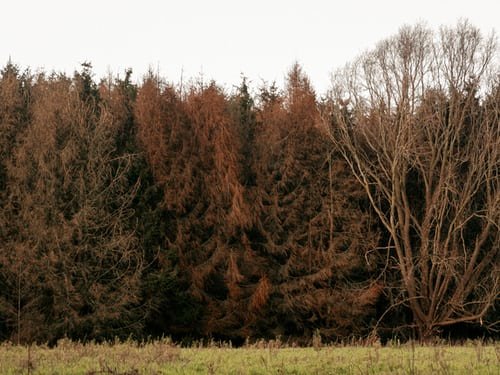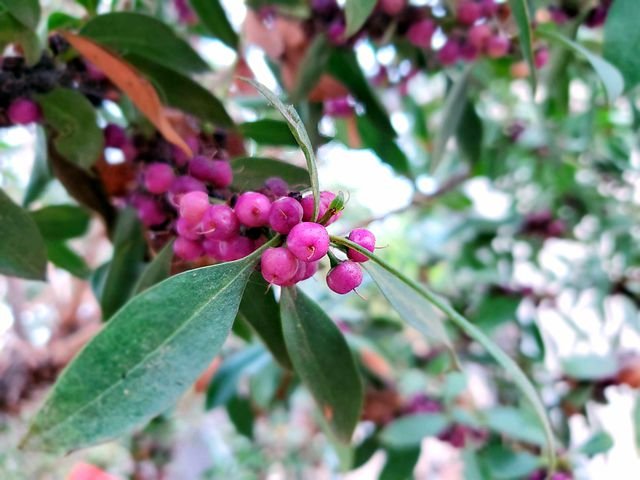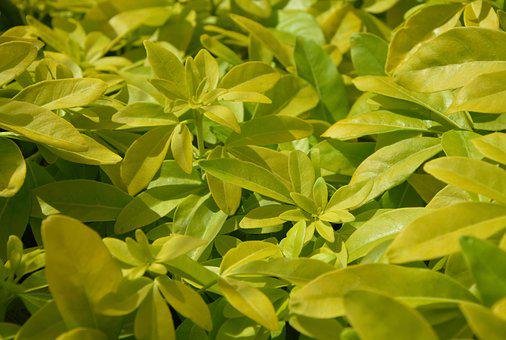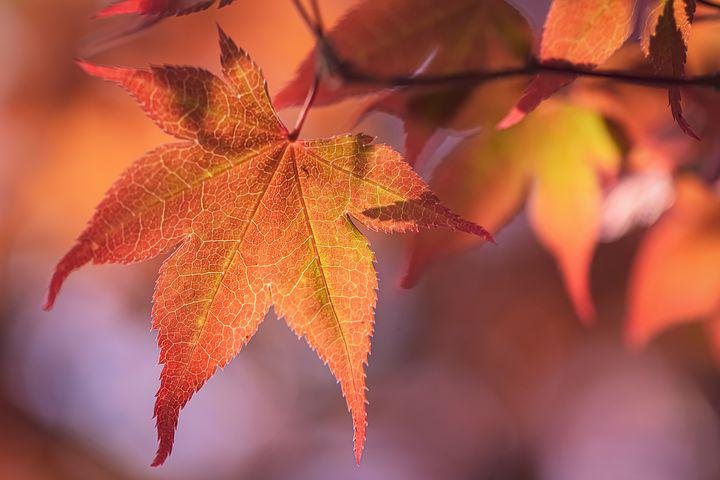Trees are very much fascinating. Apart from being able to survive hundreds of years, they have well-defined stems that support a crown of leaves. They provide lots of benefits ranging from social to environmental to communal, economic, and so on. However, they are not necessarily known for being fast-growing plants, but then some trees and plants grow fast and can put on substantial height within a few short years.
Trees are necessary not only for oxygen and food but also to ensure a safe living environment. They beautify the planets and save humans from the adverse effects of pollution and social erosion.
Furthermore, trees benefit wildlife because many species depend on trees for their habitat. Trees give off energy to breathe and provide good food, protection, and shelter for birds and mammals.
50 Fastest-Growing Trees

The growth form varies by species and can be categorized in six ways, primary vs. secondary growth, allocation of photosynthesis, shoot-growth patterns, and crown shape. Numerous fast-growing trees can thrive in multiple plant hardiness growing zones; they include;
1 . Bamboo

Bamboo is one of the fastest-growing plants in the world, which is one of the reasons why it is used for eco-friendly products. It is regarded as one of the most beneficial plants you can buy, and it is mostly not technically a tree, but it can grow to tower heights.
Bamboo is considered an exotic plant by many gardeners, and it is said to be versatile and can be a great addition to the garden. Certain species of bamboo can grow 25 inches within 24 hours.
USDA Growing Zone: Zones 7 and
Sun Exposure: Full sun
Soil: Well-drained soil.
2. Hybrid Poplar

This species of Poplar is a famous shade tree. Hybrid Poplar provides forage for browsing wildlife such as white-tailed and. The trees can grow 5-8 feet per year until they reach around 50 feet. Hybrid Poplars are low maintenance and can grow in a wide range of soil and light conditions.
USDA Growing Zone: Zones 3-8
Sun Exposure- Full sun
Soil- Mostly all soil types
3. Quaking Aspen

Quaking Aspen is a Deciduous tree native to more excellent areas of North America. This species is renowned for thriving in poor soil and cold climate.
It is often planted in rows for firewood and can serve as a shade tree to reduce energy costs. Quaking Aspen can grow to a height of 40 to 50 and can spread 20-30 at maturity.
USDA Growing Zone: Zone 1-6
Sun Exposure: Full sun, though tolerant of some shade
Soil: Garden Loam
4. Eucalyptus Tree

The eucalyptus tree is a fast-growing evergreen tree that is native to Australia. It is a large genus of more than 660 species of shrubs and tall trees of the myrtle family (Myrtaceae). The tree looks attractive and carries a familiar fragrance for various uses.
USDA Growing Zone: Zone 8 to 11
Sun Exposure: Full sun
Soil: Slightly acidic to neutral soil
5. Royal Empress Tree

This tree belongs to the family Pauloniaceae and is native to central and Western China. Its branches are covered in furry pea-sized buds waiting to burst into huge flowers. During spring, the tree explodes with purple blooms.
USDA Growing Zone: Zone 7 to 10
Sun Exposure: Full sun
Soil: Humus-based loam, well-drained soil.
6. Algae

Algae is a simple non-flowering plant that belongs to many seaweeds and single-celled forms. They can be called plant-like organisms, usually photosynthetic and aquatic, and do not have true roots.
USDA Growing Zone: 8
Sun Exposure: Full sun
Soil – Well Drained Soil
7. Duckweed

Duckweed is a monocotyledon of the botanical family Lemnaceae that are higher plants or mostly mistaken for algae. This flowering plant grows every 30 hours very quickly and can undergo an entire life cycle.
USDA Growing Zone: 4-10
Sun Exposure: Full Sun
Soil: Little Humus Soil Or Compost Tea
8. Eastern Cottonwood

Eastern Cottonwood is commonly called necklace poplar and is native to North America. It is a large, fast-growing tree found along streams, rivers, and lowland areas. It is also a sizable canopied tree with an upright that becomes arching at the tips, which creates a vast shape outline and can grow 10 to 15 feet per year.
USDA Growing Zone: Zone 2-9
Sun Exposure: Full Sun
Soil: Average, medium to wet, well-drained soil.
9. Giant Sequoia

Giant Sequoia, commonly called redwood, is a coniferous evergreen tree that belongs to the Cypress family. This tree grows at a medium rate, and its height increases by 13-24 per year.
USDA Growing Zone: Zone 6-8
Sun Exposure: Full sun, thought tolerant of some shade.
Soil: Sandy Loam.
10. Acacia

Acacia, commonly known as Mimosa, is a polyphyletic genus of shrubs and trees that belongs to the family Fabaceae and subfamily Mimosoideae. It is native to Indonesia, Papua New Guinea, and Australia. Acacia is an impressive fastest-growing tree that grows up to 20 to 40 feet tall.
USDA Growing Zone: Zone 7 higher
Sun Exposure: Full sun
Soil: Well-drained soil of sand or loam.
11. Maple

Maple is a large genus of about 200 species of shrubs or trees that belongs to the family of Sapindaceae. It is widely distributed in the Northern temperate zone and can be classified into a group of ornamentals for planting in-laws, along streets, and in parks.
USDA Growing Zone: Zone 4 to 9
Sun Exposure: Full to partial shade
Soil: Sandy or clayey soil
12. Thuja

Thuja is a genus of coniferous trees or shrubs that belongs to the family of Cupressaceae. They are also dense evergreen, providing excellent privacy and vibrant color all year round.
USDA Growing Zone: Zone 5-9
Sun Exposure: Full sun to partial shade
Soil: Sandy Loam to heavy clay
13. Norway Spruce

Norway Spruce (Picea Abies) is a fast-growing coniferous evergreen that can reach up to 60 feet tall and occasionally to 100 feet and live up to 1000 years.
USDA Growing Zone: Zone 3 to 7
Sun Exposure: Full sun to partial shade
Soil type: moist and well-drained soil
14. Pear

Pear (genus Pyrus) is a genus of about 20-45 trees and shrubs in the family Rosaceae. The tree branches naturally grow upright but spread as it begins to bear fruit.
USDA Growing Zone: 4-8
Sun Exposure: Full sun
Soil: well-drained soil
15. Weeping Willow

Weeping willows are fast-growing trees known for their dramatic and elegant appearance. It is the best-known species of weeping tree that grows 3 to 6 inches long and turns yellow in the fall before dropping.
USDA Growing Zone: Zone 6-8
Sun Exposure: Full sun to partial shade
Soil type: loamy, moist, clay, and well-drained soils.
16. Empress Splendor

Empress Splendor (Paulownia Tomentosa) is one of the fastest-growing trees globally from the genus Paulownia. The leaves grow up to 3 feet across and use a form of photosynthesis to fuel their speedy growth.
USDA Growing Zone: Zone 5 to 9
Sun Exposure: Full Sun
Soil: Adaptable
17. American Sycamore

American Sycamore is a deciduous tree native to the Eastern and Central United States, the mountains of Northeastern Mexico, and so on. It is regarded as a symbol of strength that grows up to 75-100 feet tall.
USDA Growing Zone: Zone 4 to 9
Sun Exposure: Full to partial shade
Soil Type: Well-drained and consistently moist soil.
18. Golden Bamboo

Golden Bamboo (Phyllostachys Aurea) is a fast-growing tree called fish-pole bamboo that is invasive in many areas of North America, especially those with warmer climates.
USDA Growing Zone: Zone 6-10
Sun Exposure: Full sun, partial shade
Soil Type: Moist, well-drained
19. Leyland Cypress

Leyland Cypress is a fast-growing coniferous evergreen tree that belongs to the family of Cupressaceae. When young, this tree outgrows its space in miniature landscapes and is an excellent choice for quick screens, hedges, and groupings.
USDA Growing Zone: Zone 6-10
Sun Exposure: Direct sunlight
Soil Type: Loamy, moist, rich, sandy, well-drained, and clay soils.
20. American Red Maple

American Red Maple is the fastest-growing tree that belongs to the family of Sapindaceae. The tree grows to a 40-60 spread of around 40 feet at maturity.
USDA Growing Zone: 4-9
Sun Exposure: Full Sun to Partial Shade
Soil Type: Sandy or Clayey soil
21. Kudzu

Kudzu is a semi-woody, trailing, or climbing perennial invasive wine native to China, Japan, and the Indian Subcontinent. The tree grows to a length of 18 meters.
USDA Growing Zone: 5-10
Sun Exposure: Full Sun to Partial Shade
Soil Type: Nearly all soil types
22. Transgenic Eucalyptus

Transgenic Eucalyptus is a fast-growing evergreen tree valued for hardy lumber and wellness promotion. The tree generates about 104 cubic meters and 3,673 cubic feet of wood per year.
USDA Growing Zone: 10 higher
Sun Exposure: Full sun to partial shade
Soil Type: Well-drained soil
23. Japanese Angelica Tree

Japanese Angelica Tree is a small deciduous tree that grows up to 40 feet in height with an irregular spreading multi-stemmed form.
USDA Growing Zone: Zones 4-8
Sun Exposure: Full sun to partial shade
Soil Type: Loamy Soil.
24. Koa

Koa is a species of flowering tree belonging to the family Fabaceae. The tree is native to Hawaiian Island and can be identified by its color, grain, and origin. It can grow approximately 115 feet tall.
USDA Growing Zone: Zone 10-11
Sun Exposure: Full sun
Soil Type: Well-drained, medium to strongly acidic soils.
25. Dwarf Lemon Scented Gum

Dwarf Lemon Scented Gum is a tall graceful slim tree native to Australia and commonly found in coastal areas. The tree grows about 20-30m(60-90 feet tall)
USDA Growing Zone: 9-10
Sun Exposure: Full to part sun
Soil Type: Sandy or clay soil
26. Frangipani

Frangipani (Plumeria) is a genus of about 12 species of deciduous shrub or small trees that belong to the family of Dogbane (Apocynaceae). It has richly fragrant flowers that appear across the warmer months.
USDA Growing Zone: 10-12
Sun Exposure: Full sun
Soil Type: Free draining to Sandy soil
27. Lily Pilly

Lily Pilly is a famous evergreen tree or hedge that produces edible red or purple fruit. Its varieties range from small shrubs to large trees with primarily oval-shaped leaves.
USDA Growing Zone: 9-11
Sun Exposure: Full Sun
Soil Type: Sandy loam to heavy clay.
28. Bottle Brush

Bottle Brush (Callistemon spp) is a unique type of tree among Australian plants. The tree gets its name from the brush-like leaves and rounded bottlebrush leaves that grow in the tree.
USDA Growing Zone: 8-10
Sun Exposure: Full Sun
Soil Type: Sandy soil through to heavy clay soils.
29. Tulip Tree

The Tulip Tree (Liriodendron Tulipifera) is one of the most giant growing trees in North America, belonging to the Magnolia family. The trees are commonly identified by their large flowers, which look like tulips.
USDA Growing Zone: 4-9
Sun Exposure: Full Sun
Soil Type: Moist, well-drained soil.
30. Pittosporum

Pittosporum (Pittosporum Tobira) is a thorny evergreen shrub that grows in mid and coastal South Carolina. Pittosporum can be used as an ornamental plant with hedges, border plantings, etc.
USDA Growing Zone: 8-11
Sun Exposure: Full Sun
Soil Type: Sandy, Loamy, and well-drained soil.
31. Paper Birch

Paper Birch (Betula Papyrifera) is also called American white birch and canoe birch native to North America. The trees are planted in naturally moist areas and require a lot of watering if placed in dry soils or in areas where they must compete with other plants.
USDA Growing Zone: 2,3,4,5,6,7
Sun Exposure: Partial Shade
Soil Type: Sandy, Loamy, and Moist Soil.
32. Honey Locust

Honest Locust is a deciduous tree with a long leaf retention period. It is native to the parts of the Eastern United States, Kentucky, Pennsylvania, Texas, and Nebraska, but can also grow in many areas. In the wild, the honey locust tree can grow up to 100 feet (30m) and beyond, but in landscaping, it usually grows at 30 to 70 feet (9 to 21m)
USDA Growing Zone: 3-9
Sun Exposure: Full Sun
Soil Type: Loamy, Sandy, Clay, and Silt.
33. Wattle

Wattles are best known for being fast-growing but short-lived. They can live between the period 7 and 12 years and can be used as shade or screen plants.
USDA Growing Zone: 9-11
Sun Exposure: Full Sun
Soil Type: Light, Sandy, and Medium Loamy Soil.
34. Japanese Maple

Japanese Maple is a species of a woody plant that’s native to Japan, Korea, China, Eastern Mongolia, and southeast Russia. The trees come in a fascinating array of leaf colors and shapes with various growth habits and sizes.
USDA Growing Zone: 5-8
Sun Exposure: Full Sun
Soil Type: Fine Silt or Sand (Mostly your native soil).
35. Royal Poinciana

Royal Poinciana (Delonix Regia) are evergreen trees popular in tropical and subtropical regions, best known for their red-orange five-petal flowers that show up in the summertime. It can grow around 30 to 49 feet tall and 40 to 70 feet wide.
USDA Growing Zone: 10-12
Sun Exposure: Full Sun
Soil Type: Well-drained, medium moisture
36. Dwarf Flowering Gum

Dwarf Flowering Gum is a fast-growing tree that grows into a small tree reaching 5-6 meters in height. The tree enjoys full sun and is tolerant of drought and light frost once established. However, it can tolerate pruning if you so desire.
USDA Growing Zone: 9-11
Sun Exposure: Full sun to partial shade
Soil Type: Sandy, Loamy, Sandy Loam, Clay Loam
37. Magnolia

Magnolia is a deciduous tree that grows in tree or shrub form and sheds its leaves. The tree has attractive white, pink, reddish, purple, or yellow blooms and varieties of others that are fragrant. Magnolia trees can grow up to 10 feet tall and live 200 years.
USDA Growing Zone: 7-10
Sun Exposure: Full sun to light shade
Soil Type: Moist, well-drained soil rich in organic matter.
38. Fiddlewood
Fiddlewood (Citharexylum Spinosum) is a medium-sized evergreen tree native to the West Indies and can grow to about 36 feet tall.
USDA Growing Zone: 9-11
Sun Exposure: Partial sun
Soil Exposure: Sandy, dry soil
39. Blueberry Ash

Blueberry Ash is a small hardy tree or tall shrub that grows mainly in the mainland and Southeastern Australia. They bear fruit almost all year round, starting from summer and lasting well into winter.
USDA Growing Zone: 8-11
Sun Exposure: Full sun to partial shade
Soil Type: Rich, moist soil
40. Silver Maple

Silver Maple (Acer Saccharinum) is a large shade tree belonging to the Sapindaceae family. The leaves are opposite, simple, and palmately lobed with five lobes and can grow to a height of 50-80 feet tall and can spread up to 30-50 at maturity
USDA Growing Zone: 3-9
Sun Exposure: Full sun, Part shade
Soil Type: Moist, well-drained soil, and wet soil.
41. Lemon Scented Myrtle
Lemon Scented Myrtle is a flowering plant in the family Myrtaceae. It is an absolute delight for any garden that releases a fragrant lemon scent when crushed. It is sometimes referred to as the “Queen of the Lemon herbs.”
USDA Growing Zone: 2-3
Sun Exposure: Full sun to partial shade
Soil: Well-drained, nutrient-rich soil of medium to heavy texture.
42. River Birch

River Birch is a medium-to-talk tree native to the Eastern United States. The tree grows to 40-70 feet tall and has a spread of 40-60 at maturity.
USDA Growing Zone: 4-9
Sun Exposure: Full sun to Partial Shade
Soil: Loamy, moist, sandy, well-drained, wet, and clay soils.
43. Casuarina

The casuarina tree is a fast-growing deciduous tree that can grow up to 115ft tall. It has a pine-like appearance that’s mainly found in coastal habitats such as estuaries and beaches.
USDA Growing Zone: 9
Sun Exposure: Full sun
Soil: Sandy Loam Soil
44. Pink Oak

Pink Oak (Quercus Palustris ) is one of the most straightforward tasks to grow as a transplant. It is also one of the tallest trees in Kentucky, reaching over 60 feet tall.
USDA Growing Zone: 5-8
Sun Exposure: Full Sun
Soil: Acidic, Loamy, Moist, Rich, Sandy, Well-drained, Wet, and Clay Soils.
45. Tahitian Lime

Tahitian Lime (Citrus Latifolia) is a medium-sized evergreen tree with slightly drooping branches and a spreading habit. They can grow in full sun up to 15 to 20 feet.
USDA Growing Zone: 9-11
Sun Exposure: Full sun
Soil Type: Sandy loam and clay loam texture
46. Virgilia

Virgilia is a hardy evergreen beautiful tree known for its fast growth and a tendency to fall over as it ages.
USDA Growing Zone: 9-11
Sun Exposure: Light Sun, Part Shade
Soil: Well-drained Soil
47. Grevillea

Grevillea is a flowering plant in the family Proteaceae. It is also a medium-sized deciduous tree that grows to 30 meters or taller.
USDA Growing Zone: 9-11
Sun Exposure: Full sun
Soil: Well-drained soils.
48. Water Gum

Water Gum is a fast-growing tree that has beautiful green foliage all year long coupled with its attractive fragrant flowers that are tolerant of both dry and wet conditions.
USDA Growing Zone: 10-12
Sun Exposure: Full sun to partial shade
Soil: Sandy, Clay, Loamy, Clay Loam, and Poor soil.
49. Redbuds

The Redbuds tree is like the Magnolia tree native to woodland areas and has exquisite sweet pea-like flowers that last for weeks.
USDA Growing Zone: 4-8
Sun Exposure: Full Sun
Soil Type: Loamy, Moist, Rich, Sandy, Well-drained, and Clay Soils.
50. Freeman Maple

Freeman Maple is a fast-growing large shade tree that reaches 40-60 feet at maturity and is a hybrid of red maple.
USDA Growing Zone: 3-7
Sun Exposure: Full sun to partial shade.
Soil: well-drained soil.
